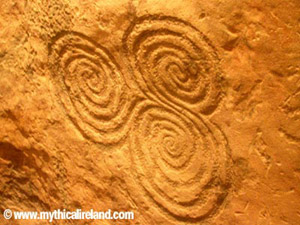Oaks, Kermes, Worms, AA and Things Red
This is a case where intuition(????), muddied thinking and a bit of let's-see-where-this-takes-us took me on an interesting journey this morning.
I was filing through my saved pages folder and came across the Universite Tangente diagram which has a page called "Rothschilds". It's an incredibly detailed map of the cross-fertilization and networking that goes on from this one very wealthy and powerful family.
They have similar diagrams for those interested in other powerful organizations.
There was a strange link from the Rothschild family to a blacked out face merely named "Worms".
A bit of googling revealed that "Worms" was the surname of a the man who married Amchel Rothschild's eldest daughter. A little bit more looking around revealed that this family took its name from the town of Worms in Germany. Worms in German pronounced Vawmss. A few articles claim that the root of this word is from the Latin Wormatia.
OK another tangent here.....For some reason of late I've come across people from the A:.A:. crowd hereafter desrcibed as the alfalfa club (alpha-alpha get it?) on the net so I was trying various combinations using aa, worms, alfalfa, Germany, Rothschild etc as there seemed to be a "feeling" something may be there.
Whilst I was searching for Amschel Rothschild on google a mistakenly typed aalchemel, I've done a little bit of alchemic work so more than likely the synapses were't firing 100%......the caffeine and nicotine hadn't really kicked in yet.
So.......taking this as a "sign" I decided to look around at alfalfa, alchemy and worms.
I came across the "Arabic Words used in English" page.
http://www.answers.com/topic/list-of-english-words-of-arabic-origin
I was filing through my saved pages folder and came across the Universite Tangente diagram which has a page called "Rothschilds". It's an incredibly detailed map of the cross-fertilization and networking that goes on from this one very wealthy and powerful family.
They have similar diagrams for those interested in other powerful organizations.
There was a strange link from the Rothschild family to a blacked out face merely named "Worms".
A bit of googling revealed that "Worms" was the surname of a the man who married Amchel Rothschild's eldest daughter. A little bit more looking around revealed that this family took its name from the town of Worms in Germany. Worms in German pronounced Vawmss. A few articles claim that the root of this word is from the Latin Wormatia.
OK another tangent here.....For some reason of late I've come across people from the A:.A:. crowd hereafter desrcibed as the alfalfa club (alpha-alpha get it?) on the net so I was trying various combinations using aa, worms, alfalfa, Germany, Rothschild etc as there seemed to be a "feeling" something may be there.
Whilst I was searching for Amschel Rothschild on google a mistakenly typed aalchemel, I've done a little bit of alchemic work so more than likely the synapses were't firing 100%......the caffeine and nicotine hadn't really kicked in yet.
So.......taking this as a "sign" I decided to look around at alfalfa, alchemy and worms.
I came across the "Arabic Words used in English" page.
http://www.answers.com/topic/list-of-english-words-of-arabic-origin
Alchemy is said to come from the word al-keemiyaa (from disputed origins; possibly Greek)
Alfalfa is said to come from arabic al-fasfasa or the fodder. It would be interesting to find out what the root fas means. Just as the word alfalfa has two A's or AA fasfasa seems to have has two phonetic F's.
A search of the page revealed that the "worms" reference, referred to the word
"Kermes" from the root Sanskrit krim-ja. (Worm produced.). This was interesting because I've seen references to the word alchemy coming from the form "al-kermes".
Fulcanelli writes about this which I shall get into later.
Alfalfa is said to come from arabic al-fasfasa or the fodder. It would be interesting to find out what the root fas means. Just as the word alfalfa has two A's or AA fasfasa seems to have has two phonetic F's.
A search of the page revealed that the "worms" reference, referred to the word
"Kermes" from the root Sanskrit krim-ja. (Worm produced.). This was interesting because I've seen references to the word alchemy coming from the form "al-kermes".
Fulcanelli writes about this which I shall get into later.
Kermes : A red dyestuff once prepared from the dried bodies of various female scale insects of the genus Kermes.
A further search on kermes, alchemy and then took me to some another intersting word.
http://members.tripod.com/philomanshomepage/word1.htm
Vermilion / Vermillion [n. ver-MIL-yun]
The color vermilion is bright red, also known as chinese red or cinnabar. There is also the pigment vermilion, which is bright red mercuric sulfide, also called cinnabar.
Another word for bright red color is vermeil, a word imported from Old French that happens to also be a root of vermilion. That word came out of Latin, from vermiculus (a little worm), the diminutive of vermis (worm).
How did a little worm lead to redness? The worm in question was the red larva of a kind of insect (Coccus ilicis) that was used to create red dye. This insect, the kermes (oak tree) scale, passed its name into Spanish as cremesin, which later passed into English as another red color name, crimson.
So we appear to have come full circle.
Vermillion- vermiculus-vermis-worm-kermes-crimson.
Vermillion- vermiculus-vermis-worm-kermes-crimson.
I was at a seminar last year where a practising alchemist was asked the question. What is the significance of Fulcanelli's references to the "oak". From some hastily scribbled notes in the back of the book I'll try to recall the reasoning. I knew abouth the Druidic Oc/Ogham connection but was unaware of some of the other relationships.
His reasoning went like this. :
Oak relates to kermes (as we have found out above, the kermes insect (oak tree scale))
Oak is similar sounding to Oca which is spanish for Goose. Oca can also mean duck footed. A gooses footprint looks like three lines meeting at a point. Known as a tribann. The three lines can be also said to represent the salt, mercury, sulphur elements of alchemy.

I found out later that a triple ring makes up the kermes structure


I found out later that a triple ring makes up the kermes structure
The three lined figure developed into a shell motif which can be found in many cathedrals. They are most noted above religous figures heads or behind the figure itself.

The shell (coquille) is also found on the Santiago de Compostela pilgrimage trail which was occurring both times I have been to France in August.

The shell (coquille) is also found on the Santiago de Compostela pilgrimage trail which was occurring both times I have been to France in August.




10 Comments:
The name of the "fruit" produced by the "kermes" insect is of course the "gall."
By Anonymous, at 5:41 am
Anonymous, at 5:41 am
Hi, enjoyed your blog/site related to **Christmas** I'm going to add your
By Anonymous, at 12:07 pm
Anonymous, at 12:07 pm
Hi
Thanks for putting such a nice blog out here for all of us to read.
Regards
state quarters
By Anonymous, at 4:59 pm
Anonymous, at 4:59 pm
Psalm 22 states the sufferings of a man.. The amazing thing is that the last 7 sayings of Jesus on the cross point back to Psalm 22.
Of greater interest is verse 6... " But I am a worm, and no man; A reproach of men, and despised of the people"... In fact Christ was actually saying "coccus worm" which was used by the Hebrews to dye the curtains in the tabernacle scarlet red. Even more interesting is that this particular worm when it is ready to deposit its larvae, it attaches itself to a tree in such a way so that it protects all the larvae that are deposited, but in doing so giving up it's life so that others may live.
Christ was nailed to a cross, shed His blood so that whosoever comes to Him will have eternal life.
Isaiah 1:18 “Come now, and let us reason together,”
Says the Lord,
“Though your sins are like scarlet,
They shall be as white as snow;
Though they are red like crimson,
They shall be as wool...
God Bless
By alex, at 3:24 am
alex, at 3:24 am
The stone of the wise has been described as a fixed red mercury. The red and the white are of prime significance.
By Anonymous, at 5:08 pm
Anonymous, at 5:08 pm
The stone of the wise has been described as a fixed red mercury. The red and the white are of prime significance.
By Anonymous, at 5:09 pm
Anonymous, at 5:09 pm
Once the female kermes beetle lays its eggs on the oak tree it becomes immobile, making the ancients believe it was a fruit. Interestingly, something else that is red grows on the holy oak tree that the ancients thought was a fruit: the psychoactive fly agaric mushroom, which plays such an important role in shamanism, religion and alchemy. I'm sure the ancients thought the kermes and the mushroom were somehow related.
By Unknown, at 6:55 am
Unknown, at 6:55 am
Once the female kermes beetle lays its eggs on the oak tree it becomes immobile, making the ancients believe it was a fruit. Interestingly, something else that is red grows on the holy oak tree that the ancients thought was a fruit: the psychoactive fly agaric mushroom, which plays such an important role in shamanism, religion and alchemy. I'm sure the ancients thought the kermes and the mushroom were somehow related.
By Unknown, at 6:55 am
Unknown, at 6:55 am
dude, love the page. reading a book now that mentioned these worms, apparently John the Babtist ate nothing but this specific type of worm... they're an afrodesieac (excuse my horrible spelling)..and some believe the oaks are holy, and that these worms,(which are specific to this tree) are thought by some to be THE sacred MANA of lore..
By Anonymous, at 9:15 pm
Anonymous, at 9:15 pm
Oh yeah, and Amanita muscaria also rules.. its interesting that the mushrooms this bright red, and the worm is used as a dye..which is also a bright red.. more likely the mushroom's got the mana.. book is by tracy twyman and alex revera btw, bafomet temple mystery something or other
By Anonymous, at 9:23 pm
Anonymous, at 9:23 pm
Post a Comment
<< Home